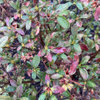Reassurance or grim reality, what have you got?
newskye
9 years ago
Related Stories

MOST POPULARDecorate With Intention: 12 Remodeling Sanity Savers
When the idealistic visions subside and reality sets in, these tips can help keep your spirits up and your work on track
Full Story
REMODELING GUIDESHouzz Tour: Baroque Minimalism in New Jersey
Modern furniture meets ornate elements in a 19th-century Hoboken brownstone, renovated with respect for its original features
Full Story
SELLING YOUR HOUSE10 Tricks to Help Your Bathroom Sell Your House
As with the kitchen, the bathroom is always a high priority for home buyers. Here’s how to showcase your bathroom so it looks its best
Full Story
HOUZZ TOURSHouzz Tour: A Modern Addition Joins a Historic California Home
Two design pros give their century-old home extra breathing room while boosting its energy efficiency
Full Story
FUN HOUZZTaking Cover in a Former Nuclear Missile Silo
A Cold War relic is now a modern home, thanks to an Australian architect with a flair for the unusual
Full Story
ARCHITECTURE10 Advantages of the Humble Ranch House
Boomer-friendly and not so big, the common ranch adapts to modern tastes for open plans, outdoor living and midcentury mojo
Full Story
DECORATING GUIDESDecorating 101: Do It Yourself or Hire a Pro?
Learn the advantages and disadvantages of decorating alone and bringing in skilled help
Full Story
BATHROOM DESIGN14 Bathroom Design Ideas Expected to Be Big in 2015
Award-winning designers reveal the bathroom features they believe will emerge or stay strong in the years ahead
Full Story
FUN HOUZZ10 Things People Really Don’t Want in Their Homes
No love lost over fluorescent lights? No shocker there. But some of these other hated items may surprise you
Full Story
REMODELING GUIDES11 Reasons to Love Wall-to-Wall Carpeting Again
Is it time to kick the hard stuff? Your feet, wallet and downstairs neighbors may be nodding
Full StorySponsored
Custom Craftsmanship & Construction Solutions in Franklin County
More Discussions








hortster
newskyeOriginal Author
Related Professionals
Saint Charles Landscape Architects & Landscape Designers · Cicero Landscape Contractors · Cornelius Landscape Contractors · Gresham Landscape Contractors · La Vista Landscape Contractors · Salem Landscape Contractors · Atlanta Window Contractors · Bellwood Window Contractors · Morton Grove Window Contractors · Naples Window Contractors · Suamico Window Contractors · Del City Decks, Patios & Outdoor Enclosures · Fort Collins Decks, Patios & Outdoor Enclosures · Green Bay Decks, Patios & Outdoor Enclosures · Wentzville Decks, Patios & Outdoor EnclosuresnewskyeOriginal Author
newskyeOriginal Author
newskyeOriginal Author
mikebotann
newskyeOriginal Author
davidrt28 (zone 7)
davidrt28 (zone 7)
gardengal48 (PNW Z8/9)
floral_uk z.8/9 SW UK
newskyeOriginal Author
floral_uk z.8/9 SW UK
Tim
hortster
floral_uk z.8/9 SW UK